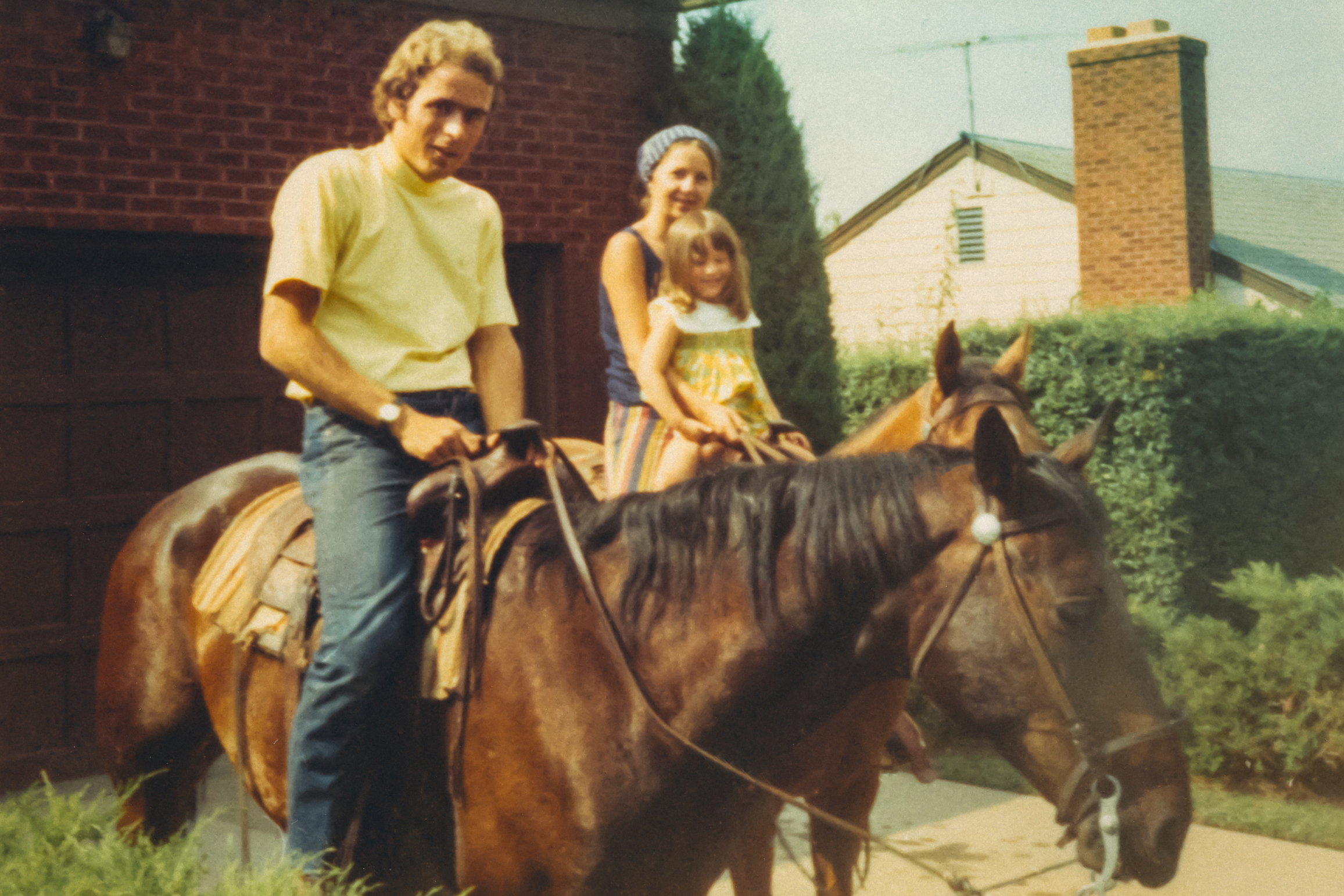Do we need another series about Ted Bundy? The answer is yes — because we still haven't admitted his misogyny
A man who brutally attacks and kills at least 30 women over the course of his 42-year life hates women. That much should be obvious, yet no one seems to have wanted to say it


Your support helps us to tell the story
From reproductive rights to climate change to Big Tech, The Independent is on the ground when the story is developing. Whether it's investigating the financials of Elon Musk's pro-Trump PAC or producing our latest documentary, 'The A Word', which shines a light on the American women fighting for reproductive rights, we know how important it is to parse out the facts from the messaging.
At such a critical moment in US history, we need reporters on the ground. Your donation allows us to keep sending journalists to speak to both sides of the story.
The Independent is trusted by Americans across the entire political spectrum. And unlike many other quality news outlets, we choose not to lock Americans out of our reporting and analysis with paywalls. We believe quality journalism should be available to everyone, paid for by those who can afford it.
Your support makes all the difference.One day in the summer of 1979, Circuit Court Judge Edward Cowart sentenced a grey-suit-clad Ted Bundy to death for his “extremely wicked, shockingly evil, vile” crimes. After informing Bundy that he would be “put to death by a current of electricity, sufficient to cause your immediate death”, Cowart looked up from his notes and saw fit to tell the serial murderer: “You're a bright young man. You'd have made a good lawyer and I would have loved to have you practice in front of me, but you went another way, partner. I don't feel any animosity toward you. I want you to know that. Take care of yourself.”
Cowart’s infamous remarks make for a striking embodiment of Bundy’s entire Florida trial. All eyes were on the man who would ultimately confess to killing at least 30 women across seven states (the actual death toll could be higher). The youngest known victim was a 12-year-old girl. But Cowart couldn't bring himself to hate Bundy; instead, he mourned his loss of potential.
Throughout the proceedings, Bundy seemed to revel in the theatricality of the court system. Despite being appointed attorneys, he insisted on defending himself. He proposed to his girlfriend, Carole Ann Boone, during a court session, and took advantage of a Florida law to declare both of them legally married, since the “vows” had been exchanged in front of court officers in an open courtroom (as outlined by the true-crime writer Ann Rule in the definitive Bundy book The Stranger Beside Me).
Serial killers such as Bundy are black holes. They swallow all the energy around them. Their crimes are so violent, so unimaginable, so beyond the normal boundaries of human behaviour that they require our undivided attention. And whenever serial killers are discussed, they inevitably end up being the centre of the narrative. The secondary players in their lives – their partners, their relatives, even the victims – fade into the background, often becoming little more than placeholders or stereotypes.
But an upcoming Amazon series is attempting to shift our perspective, diverting it away from Bundy and onto the women in his story. As announced earlier this week, Ted Bundy: Falling For a Killer will feature groundbreaking interviews with Bundy’s former girlfriend Elizabeth Kendall and her daughter Molly. Kendall was involved in a relationship with Bundy for several years in the Seventies; indeed, Bundy partly raised Molly, who was a child at the time. This is the first time Kendall will speak out publicly in four decades. She authored a book about her relationship with Bundy, titled The Phantom Prince: My Life with Ted Bundy, in 1981, which has been out of print for years (the cheapest copies currently available on Amazon cost around $173) and is being republished in January.
"Ted Bundy: Falling for a Killer reframes Bundy’s crimes from a female perspective – uncovering the disturbing and profound way in which Bundy’s pathological hatred of women collided with the culture wars and feminist movement of the 1970s, culminating in what is perhaps the most infamous true-crime saga of our time,” Amazon’s description of the new series reads in part. The programme, which is being produced and directed by the investigative journalist Trish Wood, will include a “chorus of female voices”, including some who survived attacks by the killer.
One might wonder if more Ted Bundy content was what we needed in our current cultural landscape. The past year alone has seen the release of Conversations With a Killer: The Ted Bundy Tapes, a four-part Netflix documentary documenting Bundy’s crimes, capture and sentencing, and the biopic Extremely Wicked, Shockingly Evil, and Vile, in which Bundy is portrayed by Zac Efron (Kendall, who features prominently as a character, is played by Lily Collins). But despite those recent releases, the truth is that yes, we desperately need a docu-series such as Falling For a Killer, which seems to set out to do what so few true-crime productions have done: address the misogyny behind a serial murderer’s impulses.
Naturally, there’s no telling whether the show actually accomplishes those things until it’s released, but its premise highlights a shift that is desperately needed in the true-crime genre. It’s really quite amazing how rarely the words “pathological hatred of women” are written or uttered even when the man at the centre of the conversation murdered and/or sexually assaulted dozens of them.
This applies to other types of killers too: this week, people in France (where I am from) collectively gasped as it was reported that Xavier Dupont de Ligonnès, a man suspected of murdering his wife and four children in 2011, had been arrested at Glasgow Airport. The arrest turned out to be a spectacular mistake — the man in question simply bore a passing resemblance to de Ligonnès — but in the hours after the original news broke, social media users were collectively rejoicing at the thought that de Ligonnès, who has been missing for eight years, had been located. Amid a sea of memes and quips, I only saw one tweet acknowledging the gravity of the still-unsolved killings. It’s also worth noting that family slayings such as the one de Ligonnès is suspected of tend to happen after a campaign of domestic violence.
This isn’t to cast a judgemental eye on true-crime enthusiasts or anyone who takes a casual interest in a real-life murder case (I have spent way too much time Googling various cases and listening to various podcasts for that). But if we’re going to take interest in the tales of violent killers such as Bundy, then it’s vital to acknowledge the gendered nature of their crimes.
Conversations with a Killer The Ted Bundy Tapes trailer
Most of the time, when Bundy’s are discussed, two things can happen. In the best-case scenario, Bundy is depicted as a sociopath or a psychopath, or perhaps both or neither, and dismissed as someone not worthy of attention (fair enough). The worst-case scenario is when the conversation turns to Bundy’s supposed “good looks” (to me, he looks like a thirty- or forty-something creep in most photos, but then again, hindsight is 20/20). Something that almost never happens, however, is an in-depth discussion of the women in his life – his victims, the lives he took, the trauma he inflicted on those who survived, the mother who testified after he was convicted of murder in an attempt to spare him the death penalty, and Kendall herself (who tried to bring Bundy to investigators’ attention during his killing spree, to no avail).
A man who brutally attacks and kills at least 30 women over the course of his 42-year life is first and foremost a misogynist with a deep-seated hatred of women. This shouldn’t have to be said, but it’s a necessary acknowledgment in 2019. If a new Bundy docu-series is what it takes to accomplish that, then it’s a necessary and welcome addition. I know I’ll be watching.
Join our commenting forum
Join thought-provoking conversations, follow other Independent readers and see their replies
Comments